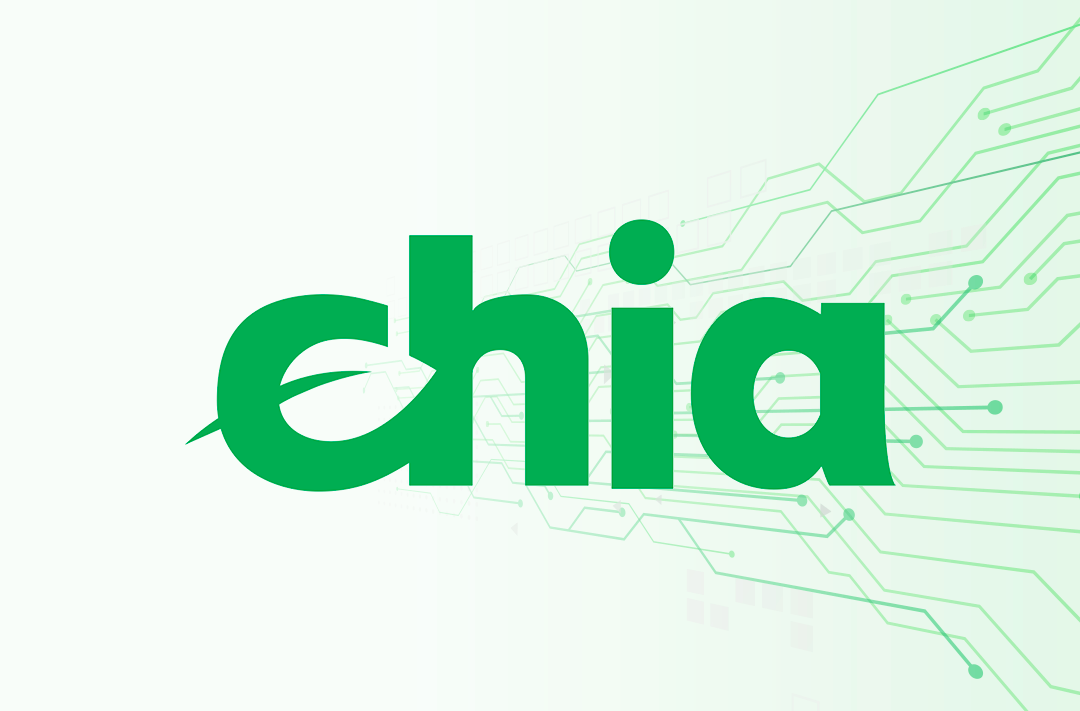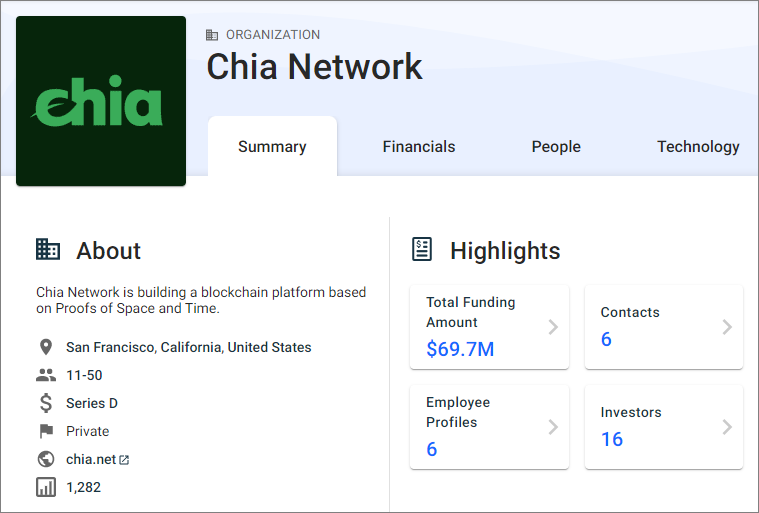The “green” Chia coin: will mining become eco-friendly?
Chia cryptocurrency appeared as an environmentally friendly alternative to such coins as Bitcoin and Ethereum. It doesn't require much power to mine, and all it needs is a sufficient amount of memory on the hard drive

22.08.2021
3210
6 min
1
How the “green” coin differs from other cryptocurrencies is explained in this article.
What are the features of Chia?
The China Network was created in August 2017 by Bram Cohen, a network protocol engineer and inventor of BitTorrent. He envisioned Chia to be the first corporate-level digital money.
“Cryptocurrency should be easier to use than cash. It is harder to lose and almost impossible to steal”
On February 9, 2021, Chia released a Business Whitepaper and launched the main network for farming on March 19, 2021.
Why Chia? Bram Cohen wanted to reduce the energy dependence of the blockchain with a “green” solution. This forced the developers to look for a seed that embodied their idea. They were looking for a short and effective name that would reflect the idea of farming on unused free disk space. That's how the name “Chia” came about.
What is Chia? This is a blockchain platform designed to facilitate payments abroad, escrow, and institutional storage of funds using smart contracts.
Chia designation. XCH is a currency symbol. Chia can be divided up to 12 decimal places. The smallest of the Chia units is called “mojo,” after Mojo Nation, a decentralized file storage platform created by Zooko Wilcox and Bram Cohen, in the early 2000s.
How it differs from other coins. The coin uses the new Proof of space & time consensus algorithm. Mining a “green” coin utilizes the disk space of a computer rather than its processing power. This process consists of plotting and harvesting.
John Hoffman, the president of China Network: “[The consensus algorithm] Proof-of-space&time is more secure and decentralized than Proof-of-work. At the same time, it consumes 1000 to 10000 times less energy per security unit”
At the plotting stage, the miner reserves space on their hard disk, in which possible solutions to mathematical problems (cryptographic hashes) are generated. Miners do not solve these problems: all solutions are already contained on one of the hard drives. The more hard disk memory is used, the more hashes are stored in it. And the higher the probability that the correct solution will end up on the miner's device.
Harvesting identifies the miner that will generate the next block. The first 32 miners, whose devices will have the solution to the cryptographic problem, will be rewarded for the mined block. For one mined block, the user receives 64 XCH.
Programming language. Chialisp is the new programming language for Chia smart transactions. It is easier to audit, transparent, and easy to use.
The first version of Chialisp 2019 received good feedback from the DeFi representatives and developers. Chialisp enables parallel transactions rather than sequential ones by combining key elements of the Ethereum and Solidity codebase with Bitcoin Core and bitcoin's UTXO model.
Colored coins are already integrated on the Chia blockchain. This is a technology that gives each coin a unique hash (“color”). The use of colored coins in DeFi-protocols will help prevent an attack on instant loans, which is often committed by hackers.
How to grow Chia
Unlike bitcoin and Ethereum, which are mined through the power of the processor and video cards, Chia mining is carried out due to the available space on hard drives. The process is called farming.
Technical requirements. To grow Chia, you will need a PC or laptop.
Processor. Any quad-core processor will do. For better performance, it is best to choose a model with a built-in video card. In this case, one video card slot can be used to connect additional storage.
Storage device. For Chia farming, you can use both SSDs and HDDs that support SATA III or higher. You will need at least 300 GB of disk space. There should be at least 15% free space left on the hard drive after the raft is created. This will increase the lifespan and solve the problem of speed drop during operation.
Motherboard. The more ports on the motherboard, the more disks the miner can use. The motherboard must also support SATA III and USB 3.0 interfaces.
Power supply unit. The power consumption of HDD and SSD is small: up to 500 watts is enough.
RAM. The minimum amount of RAM for Chia farming is 2 GB.
Hardware shortage. Despite the fact that Chia Network is a fairly new project, its popularity has led to a dramatic shortage of HDDs and SSDs. The real rush started in China, where most of the miners are located.
Western Digital and Seagate, the two largest manufacturers, reported increased demand for their products. Under normal circumstances, a 1TB drive lasts up to five years. One report stated that Chia farming rendered the SSD unusable in less than two months.
Hosting provider Hetzner has banned the farming of coins on its servers, stating that the load on their hardware has increased significantly and hard drives have started to fail.
This inevitably leads to an increase in the cost of Chia farming devices, which directly affects the increase in the cost of XCH mining.
The developers, in turn, say they are looking for a solution to the problem. The company is working with leading suppliers to create specialized products for Chia.
How to buy/sell a “green” coin
You do not have to mine Chia Coin yourself, just like other coins. They are available for purchase or sale on cryptocurrency exchanges.
Cryptocurrency exchanges. XCH began trading on the Hotbit exchange in May 2021 at $2,561.
In July 2021, the digital coin is traded:
- XCH/USDT on crypto exchanges such as Huobi, Gate.io, OKEx, BKEX, XT.com, MXC;
- XCH/ETH on the Gate.io. crypto exchange

The dynamics of the value of Chia since the start of trading
Issuance. The coin issue is limited to 21,000 XCH. For twelve years after the launch of Chia, there will be a halving period every three years (halving the reward). After this period, the reward will remain at the same level of 4 XCH every 10 minutes. This will protect Chia from inflation.
Wallet. Popular multicurrency and hardware wallets do not support Chia storage. Therefore, only the official Chia client can be used as a wallet. Other than that, coins can be stored in exchange wallets.
What the future holds for Chia
The “green” company. The green coin company Chia Network has almost doubled in size since the venture round closed in May 2021, from 21 employees to 40. John Hoffman, the company's president, has hired five heads of departments: sales, product development, and professional services.

The company's growth does not stop there. Future plans include hiring employees, some of whom will be involved in research and development.
“Expanding Chia and hiring new talent will support the company's growth and implementation of cryptocurrency,” says John Hoffman, Chia’s president and CEO.
This project is supported by large funds Andreessen Horowitz and Galaxy Digital and has ambitious plans to create a “customizable international commercial bank that works faster than Bitcoin.”
Capitalization. At the end of May 2021, Chia Network was valued at $500 million. It was able to raise $61 million for financing.
IPO. The goal of the company's executives is to bring the shares to the American stock exchange. This way shareholders will be able to share risks and profits with the management of Chia. The company intends to conduct an IPO in accordance with SEC requirements.
Chia Network is designed to improve the financial and payment system. Chia's digital money will be used as a payment instrument rather than an investment tool.
Useful material?
Basics
Why Satoshi Nakamoto’s technical manifesto for a decentralized money system matters
Oct 31, 2022
Basics
Experts evaluated the development prospects of the new ecosystem and the investment attractiveness of its token
Oct 20, 2022
Basics
How to track fluctuations correctly and create an effective income strategy
Sep 13, 2022
Basics
Review of the most profitable offers from proven trading platforms
Aug 29, 2022
Basics
The Ethereum Foundation team has published a breakdown of major misconceptions about the upcoming network upgrade
Aug 18, 2022
Basics
What benefits the exchange offers, and what else is in the near future
Aug 4, 2022









 Telegram
Telegram  Twitter
Twitter